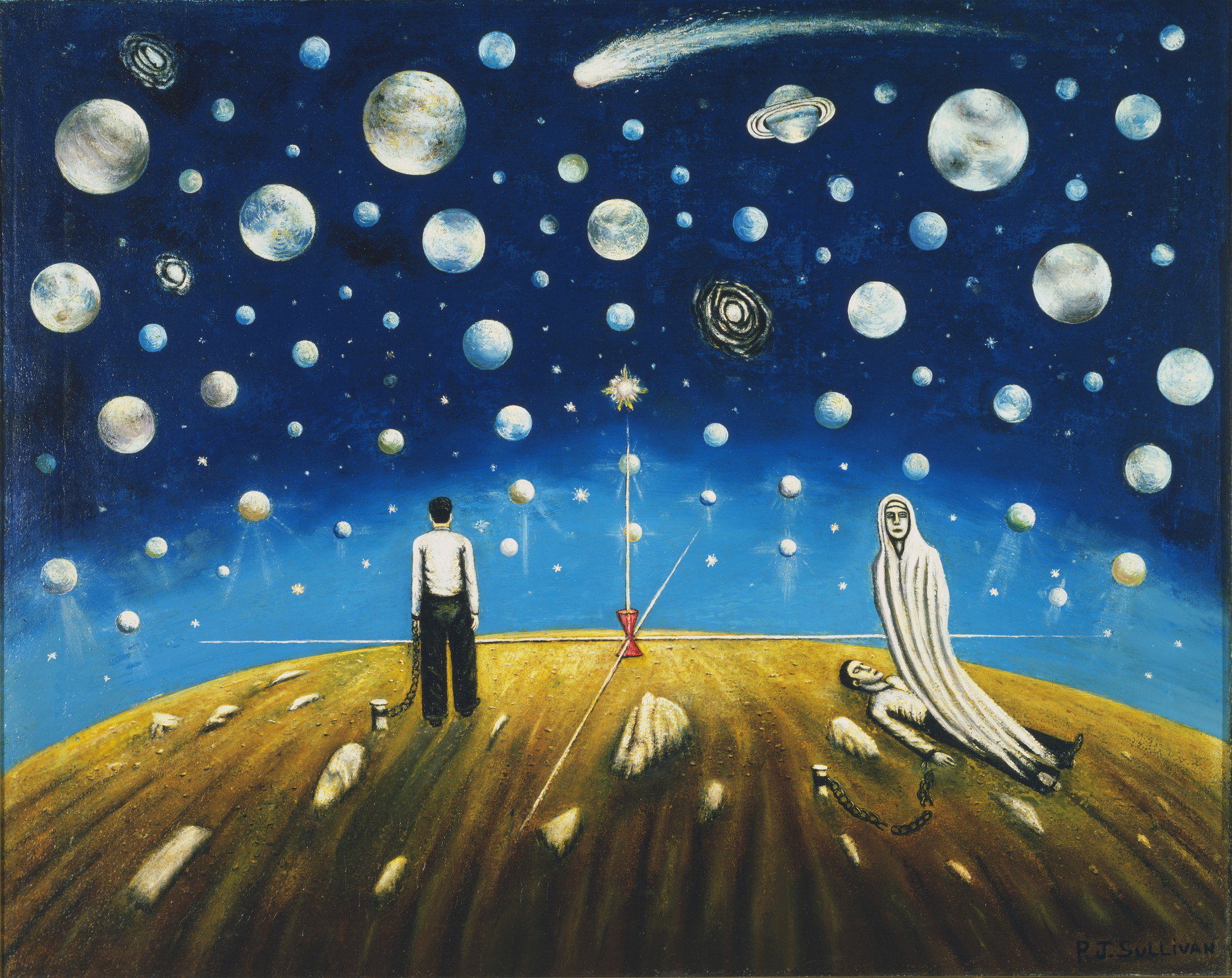Math + Art
After reviewing this week's topic, I was truly blown away with how interconnected math, art, and science are. I already had some prior knowledge that math and art were connected some how when it to more structural art elements like vanishing points. The theorem states that "if two or more lines in the real world are parallel to one another, but not parallel to the picture plane, then they have the same vanishing point" (Frantz). Many artists used vanishing points as a way to take advantage of a person's perspective and create the illusion of something 'disappearing', despite it still being present.

The culmination of these ideas resulted in Einstein's theory called the Einsteinian Relativity Theory and how it proposed an existence of a 4th dimension. His theory became revolutionary as it "encouraged artists to depart from visual reality and to reject completely the one-point perspective system that... had portrayed the world as three-dimensional" (Henderson 205). Many of the prominent figures viewed the 4th dimension in an idealistic way, usually coupling it with a futuristic, utopian view. Many of their visions included shapes like cubes and spirals but also introduced topics like motion and antigravity & gravity. They aimed to reject the modern, three-dimensional world and the status quo imposed upon them.

The 4th dimension led to modern arts like the Crochet Coral Reef to be created. Although it was created as a purpose to bring to light the effects of climate change, it also serves as a contemporary piece that pushes past the 'need of necessity' and tries to reclaim the art as 'fancywork'.
One of the most notable artists to dive into the 4th dimension before it was even discovered was Pablo Picasso. He was an artist that wanted to challenge the modernize world and its push into hyperrealistic art. He felt that art "should not copy nature" and thus he didn't feel the need to continue following the directions of the art world. By separating paintings and reality, Picasso looked towards cubism as he believed that we cannot view objects in one perspective but instead view them in many angles and perspectives to grasp the full understanding of the artwork.

Ultimately, math, art, and science all exists in one, or rather multiple, planes together. They all intertwine with each other and to believe that one is more important than the other is a lie.
References:
Vanishing Points
Frantz, M. (2000). Lesson 3: Vanishing points and looking at art. University of Central Florida. http://www.cs.ucf.edu/courses/cap6938-02/refs/VanishingPoints.pdf
Uccello, P. (2010). A Hunt in the Forest (1470). Retrieved from https://en.wikipedia.org/wiki/The_Hunt_in_the_Forest.
The 4th Dimension
Henderson, L. D. (2013). The Fourth Dimension and Non-Euclidean geometry in Modern Art. MIT Press.
Sullivan, P. J. (2013). The Fourth Dimension (1938). Museum of Modern Art. Retrieved from https://www.moma.org/collection/works/80200.
Pablo Picasso
Picasso, P. (2012). Three Musicians (1921). Master Works: Fine Art Gallery. Retrieved from https://news.masterworksfineart.com/2018/10/31/pablo-picasso-and-cubism.
Hi Sydney,
ReplyDeleteI enjoyed reading your blog post on the interconnection between math, art, and science. Similar to you, I was also fascinated by the intersection of these disciplines after this week's lecture. I like how you pointed out that concepts like vanishing points in art connect to mathematical principles and how these ideas even extend into revolutionary scientific theories like Einstein's Relativity Theory. Your example of Picasso's artwork also helps to highlight how artists have actively challenged traditional perspectives to offer new ways of seeing and understanding the world. It's fascinating to consider how concepts once confined to mathematical theory have inspired artistic movements and vice versa and that even in our modern world, math, art, and science continue to inspire innovation and creativity. Thank you for sharing such an insightful reflection.